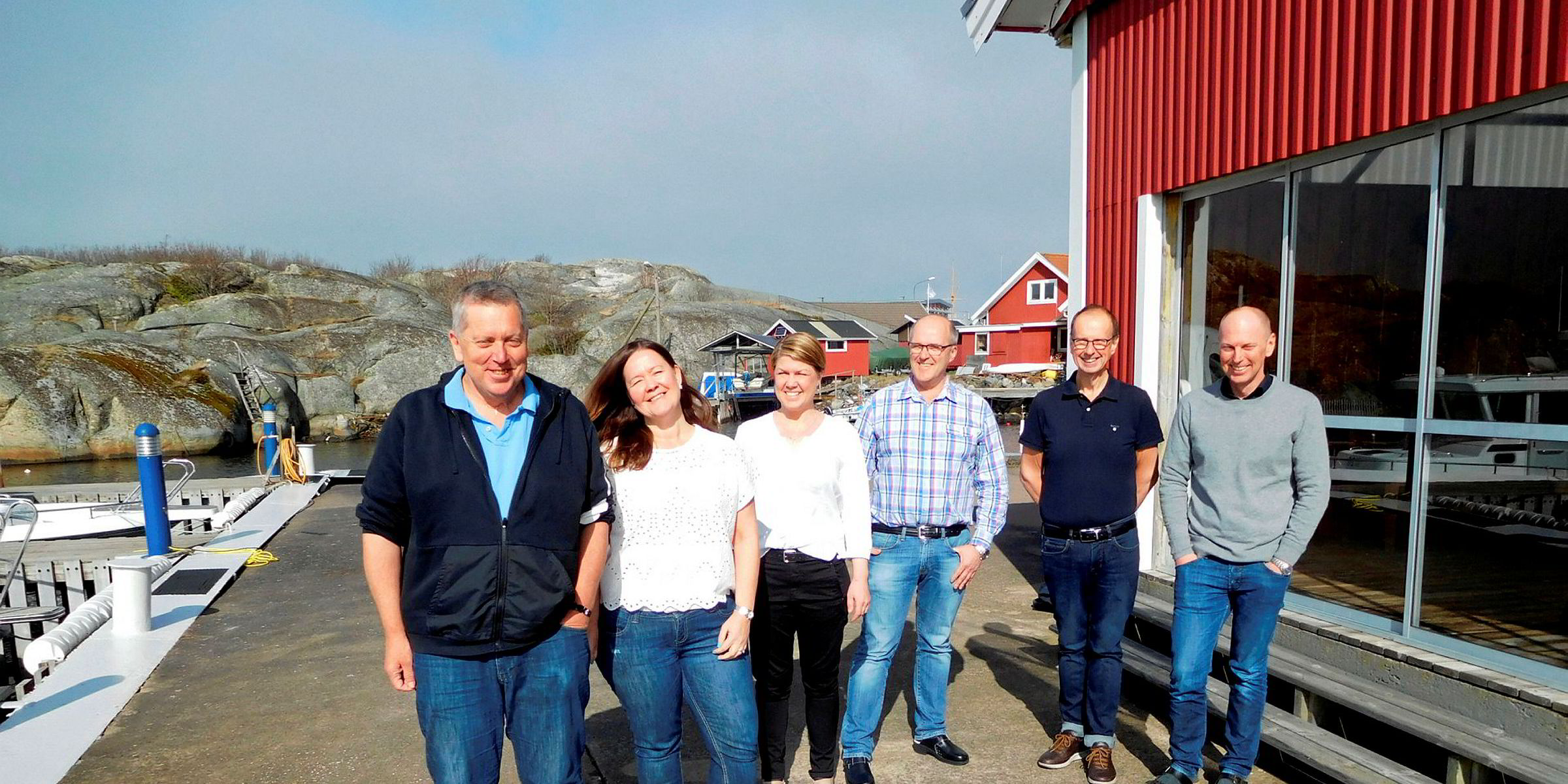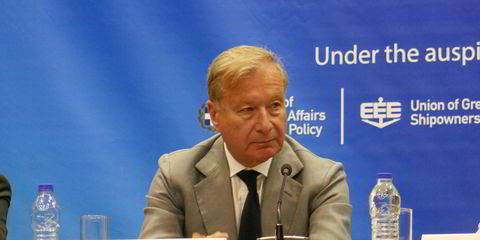Setting foot on Donso is like stepping back in time.
This picturesque Swedish island, part of an archipelago to the west of Gothenburg, is home to 1,400 people, many of whose families have lived here for generations. Apart from the odd truck or van, there are no vehicles. Locals whiz about in electric buggies or on two wheels.
Historically, fishing was the economic lifeblood, and the inhabitants were known for their religious conviction. That legacy endures.
Neat red-roofed houses cluster around the harbour, which features rows of red-stained fishing huts and a spray of commercial buildings. A former ice warehouse on the quay houses a restaurant providing a focal point for social life.
The 40 or so fishing boats that would have crowded the harbour in the 1940s have gone, but out of that industry grew what is now Donso’s unique strength: its shipowners.
But few might expect to find so many owners in such a small traditional setting to be among the pioneers building tankers that will run on clean and green fuels — and pushing into LNG propulsion.
The island boasts 10 or so shipping companies that control a fleet of mainly small to intermediate-size, ice-class tankers working the Northern European oil products/chemicals trades. They are hands-on owner-operators, and proud to a man: you won’t find any speculators sitting around “drinking pina coladas”, says Lars Hoglund of Furetank.
The shipowners are part of a complex web of inter-relatedness or “one big family”, according to Sirius Shipping’s Jonas Backman. For example, Hoglund’s colleague, Per-Anders Hoglund, is cousin to Backman’s mother; and his father and the father of Terntank’s Tryggve Moller are cousins.
They share technical information on everything from port issues to tank cleaning, but are definitely commercial competitors and never discuss financial affairs.
Quality and “tailoring” tonnage to customers’ needs are cemented in their thinking. Their fishermen forebears were quick to adapt to new technologies, and the bold move into LNG testifies to that heritage.
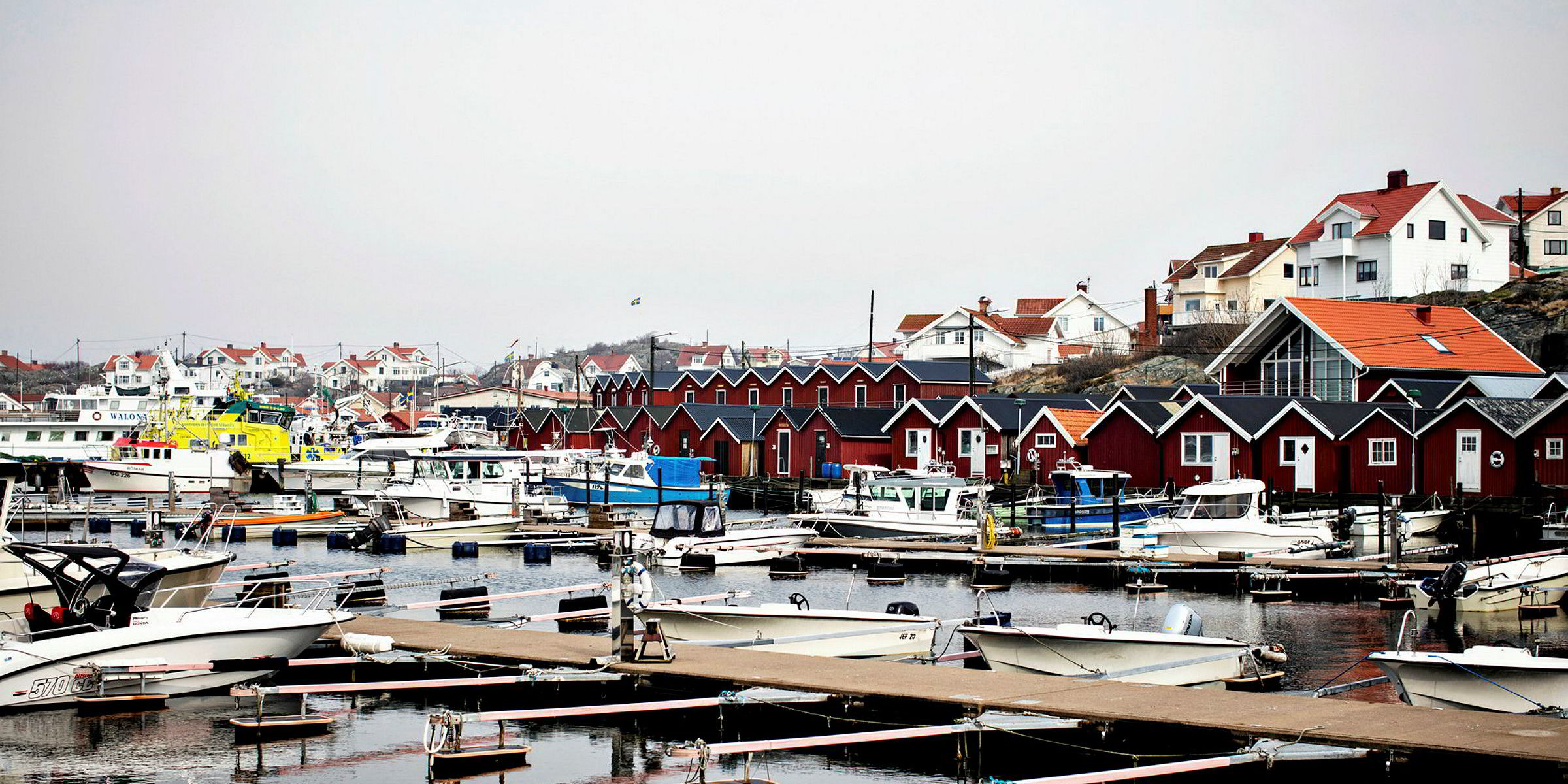
Getting the ball rolling was Terntank. In March it took delivery of the Tern Ocean, the last in a series of four 15,000-dwt, LNG-powered oil/chemical tanker newbuildings ordered in 2013 and 2014 at Avic Dingheng Shipbuilding in China.
For managing director Tryggve Moller, being a front-runner on emissions reduction is a moral imperative. “You must feel proudness and dignity. Everybody needs to want this, otherwise it’s impossible,” he tells TW+. “You need to feel in your stomach that the environmental issue is important and that it’s the future.”
Terntank calculates that a vessel built at the end of the 1990s would emit the same amount of nitrogen oxide (NOx) on one voyage from Gothenburg to Bergen as all four newbuildings on 10 voyages.
The Tern Ocean is on time charter to Sweden’s Preem. Terntank also works tightly with charterers NEOT of Finland and ExxonMobil in Norway, which have a newbuilding each.
The oil companies’ aim to shift to cleaner fuels helped spur the dual-fuel quartet. Oil companies are often viewed negatively but “they are not the bad guys”, Moller insists. “It’s their future and how they’re perceived in the market,” he adds of their work to develop cleaner fuels.
They also shoulder some of the investment through paying a charter premium, but Moller says the higher rate is offset by reduced fuel consumption.
That is partly down to the vessels’ innovative, Rolls Royce-designed hull form. “Underwater, this hull is rocket science,” he says, and ExxonMobil is “super-happy” with the consumption figures.
Rolls-Royce worked on the design for a couple of years but Terntank was the first to order. “They said, ‘You’ve come to the right guys, everything’s in the computer ready to go’,” Moller says. “We were lucky.”
He will not reveal the price of the newbuildings, but financial manager Dick Hoglund says they have 70% bank financing over 15 years.
Moller says it has also been important “to find areas where we can get some money back”. Examples are through Norway’s NOx Fund, a 90% reduction of fairway dues in Sweden and discounts in port fees, such as Gothenburg’s 30% cut.
Terntank was founded in 1958 by Sven-Olof Kristensson, Moller’s father-in-law. Moller’s wife, Rigmor, chairs the board, while her sister, Annika, handles accounting.
Kristensson’s family have been involved in shipping since 1911, when his grandfather, Kristen Andreasson, took delivery of a combined fishing and bunker vessel to supply oil to the fishing fleet. It carried barrels on deck before being converted in 1924 to a tanker capable of carrying 15,000 litres.
In the late 1920s, Andreasson teamed up with three partners to form Donsotank, which Moller says was the first shipping company in Europe to order a purpose-built bunker vessel. Coastal tanker demand increased in the 1940s with a steady shift from coal to gasoil for domestic heating, and a similar transition in the wood and paper industry around Lake Vanern and beyond, accessible through the Gota Canal. Later, bunkering larger merchant vessels in Gothenburg gave the company a fourth pillar of business.
Kristensson struck out in 1958 to become a shipowner in his own right.
A grounding and oil spill from one of his tankers in Lake Malaren in 1969 was a turning point. Determined to reduce the risk of another incident, Kristensson made history with an order for the first double-hull tanker in 1972 — long before they were made mandatory. Since then, all of Terntank’s ships have been double-hull. Its fleet of 12 tankers today ranges from 8,245 dwt to 15,000 dwt, with 10 on time charter and two on spot.
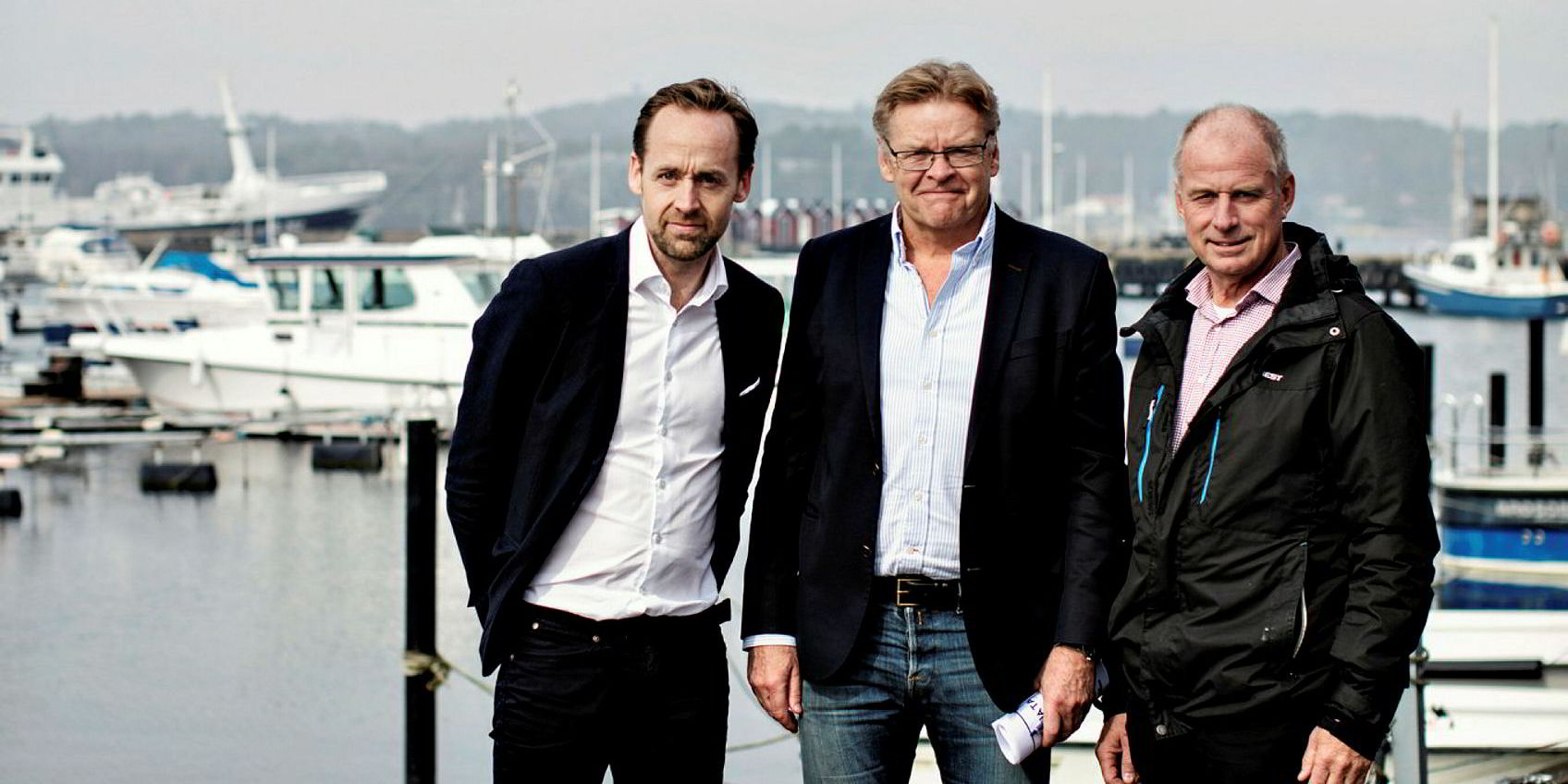
Terntank’s close neighbour Furetank began talking about LNG in 2011, recalls managing director Lars Hoglund. The company took its first step by working with engine maker MaK to retrofit its 17,557-dwt tanker Fure West (built 2006) in 2015, with the cost 50% financed by the EU. It bunkered for the first time at Risavika in southwest Norway in September 2016. “But we didn’t make it too public because we wanted to see how it worked,” Hoglund says.
With six or seven vessels nearing their 20-year cut-off, Hoglund says the company needed to invest from 2014 to retain its market share. Despite uncertainty over availability and prices, Furetank’s owners and board took the leap.
“The driving force is not only the CO2 [carbon dioxide] but people’s health. A lot of reduction can be done on normal vessels through design and energy saving. But LNG is much, much cleaner,” Hoglund says — also for the crew. Down in the Fure West’s engine room when it is running on LNG, he adds: “You don’t smell any oil. Nothing.”
He says Furetank was emboldened by Terntank. “Oil companies took [their] vessels on time charter immediately.”
Furetank went on to book three 16,300-dwt newbuildings at Avic Dingheng, as part of a series of six inked in 2015 and 2016 along with partners in its Gothia Tanker Alliance. They include the Jakobsson and Nilsson families’ Alvtank, with two ships, and Erik Thun Group-owned Thun Tankers, with one. The vessels are due for delivery next year and in 2019. Hoglund puts their price at between $25m and $35m each.
Furetank also has deep Donso roots. It was founded by third-generation owner Hoglund’s grandfather, Lars, his father, Hans, and uncle Per-Gunnar, plus a cousin. Their background was in fishing.
“In the family we know all the vessels we have owned back to 1680,” says Hoglund. If you grow up on Donso there are not many other career choices, he adds. “It goes without saying what you’ll do!”
Furetank entered the tanker business in 1955 with a newbuilding from a yard in Amal, Sweden, followed by another 600-dwt vessel in 1962. Both were built to supply oil to the forest industry and steel plants around the Swedish lakes.
Most of the oil for the Lake Vanern region was carried in tankers until around 2000.
A shift to coastal trading also came from 1962 when Furetank landed a time charter with Dansk Esso. “That ended up with us starting our own chartering company in Denmark in 1985 — Nordtank Shipping — 50% owned by Furetank and 50% by Michael Hjortbol,” Hoglund says. The enterprise grew to 20 ships by 2005, all trading in Scandinavia.
It was then decided to sell Nordtank to Denmark’s Brostrom, swelling the latter’s fleet to around 60 tankers. Brostrom was taken over by Maersk in 2008, but, wanting to stay independent and hands-on, the agreement was ended and a new venture, Milestone Maritime, formed. “It was a very hard market, very tough. But we survived,” Hoglund recalls.
The family had always wanted its own chartering company, and the opportunity arose in August 2012 when Maersk said it would consolidate all Maersk Brostrom’s chartering activities in Copenhagen. “We picked four guys from Maersk Brostrom and said, ‘If you want to stay in Gothenburg, we can open an office and you can continue to work with the vessels’,” says Hoglund. Furetank Chartering was born — and Stefan Magnusson, who was one of the four, is now general manager.
Furetank today operates 17 tankers ranging from 13,000 dwt up to 18,736 dwt, with one unit of 37,082 dwt.
Meanwhile, Joakim Lund, now chief commercial officer at Thun Tankers but who also worked for Brostrom in the early days, says Maersk decided to divest 15 smaller tankers 50% owned by Erik Thun Group. That move saw Thun Tankers created in November 2012; it now operates 16 vessels up to 8,640 dwt.
In addition to its single 16,300-dwt LNG-powered vessel on order at Avic Dingheng, Thun’s orderbook includes four 7,999-dwt, LNG-ready units at Dutch yard Ferus Smit for delivery from 2018, and a freshly announced IMO-2 quartet of 17,500 dwt, also at Avic Dingheng.
Thun Tankers handles the smaller units up to 10,000 dwt for Gothia, and Furetanker the 10,000-dwt to 20,000-dwt bracket — around 25 and 20, respectively. Echoing Moller’s comments, Magnusson says: “Renewables is something that we strongly believe will grow — various kinds of biodiesel.
“If you have commercial co-operation with a company whose main objective is to deliver renewables to the market, they are also focused on the transport. That’s why we think we have a good advantage.”
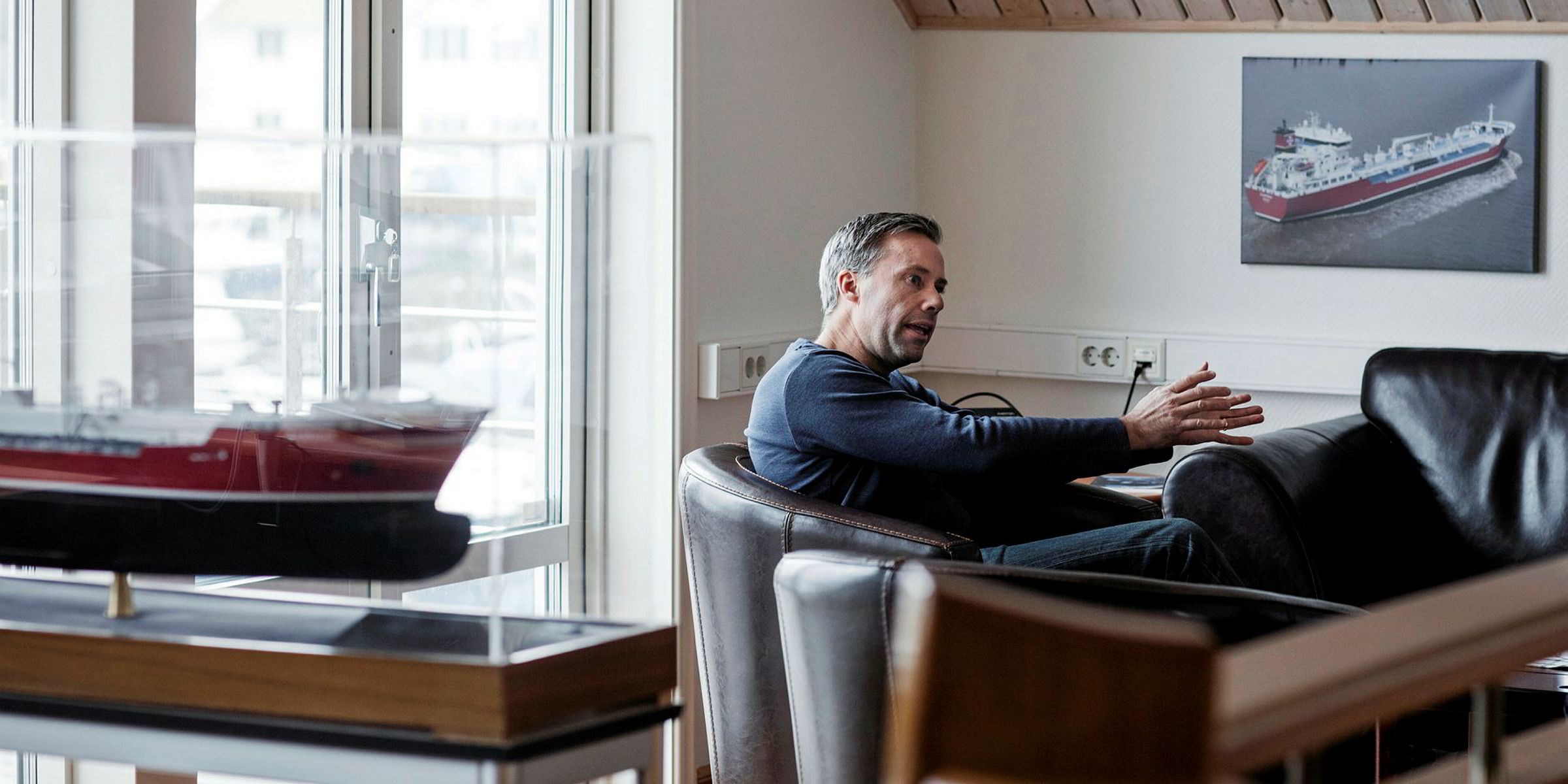
Nearby Alvtank has two vessels to its name. Managing director and master mariner Christian Nilsson is another third- generation shipping man. His maternal grandfather, Fridolf Jakobsson, founded the company in the 1920s. His two sons, Sven and Johannes, captained a small tanker purchased in the 1950s, trading to the inland lakes. That remained the core business until 2000, when trains began freighting oil directly from refineries in Gothenburg.
With the shift to North Sea and coastal trading, Alvtank bought two larger tankers in 1996 and 1999. The first was a former Terntank vessel, purchased when Nilsson was just out of school and embarking on his sea career. “It was good, in the old way, like the old fishermen here,” he says. “We didn’t have an office onshore. The whole family worked onboard the vessel.”
The company’s close relationship with Furetank started when it began trading its ships with Nordtank. In 2002 it joined Furetank to order two 17,600-dwt vessels, the Fure Nord and Ramona (both built 2004), at Shanghai Edward Shipbuilding in China, where Terntank and Donsotank had also booked tonnage.
“I was captain onboard Ramona when we sailed from the yard to Europe. On the way we got a message from Nordtank that it had been sold to Brostrom,” Nilsson recalls. Maersk’s later takeover of Brostrom saw Alvtank follow Furetank into Milestone Maritime, then into Gothia. Furetank Chartering commercially manages its two ships, the other being the 17,000-dwt Ramira (built 2008), but Nilsson stresses “we do everything else”.
“If you look at the regulations, there was only one solution for us and that was very clean fuel,” he says of the decision for its two dual-fuel units at Avic Dingheng. Each is costing around $30m, financed 80:20 by Svenska Skeppshypotek.
Nilsson expects Furetank will deploy them in the same way as its existing ships, split between spot and volume contracts. “We’ve ordered the two vessels, so we believe in the future. [And] they have much better fuel consumption.” But more newbuildings are unlikely. “We like this type of small, family-owned company. We talk to the captains, chief officers, chief engineers a couple of times every day. We work very tight,” he says.

The same sense of tough independence is evident a stone’s throw away at Sirius Shipping, founded in 1994 by Backman brothers Jonas, who is managing director; Daniel, the financial and safety manager; and technical superintendent Anders.
“This company is a little different to the others. We haven’t taken over from our fathers. But our grandfathers were fishermen and sailors, and also owned vessels,” says Jonas.
Anders and Daniel are master mariners and all three brothers previously worked for other Donso owners: Daniel at Terntank; Anders and Jonas at Furetank. That co-operation continues through jointly owned IT firm Donso Data. “We talk to each other a lot!” Jonas adds.
Sirius started out with a small bunker vessel for which it secured a time charter. A “red thread” is that there has to be employment when they buy a ship, Jonas says. “We have never been an asset player.”
The company’s chartering division in Fiskeback on the mainland now operates 15 vessels from 4,000 dwt up to 14,000 dwt. Jonas says Sirius will not expand unless volumes grow.
“We work in a very small segment, very close to our customers, five/six refineries here and a handful of oil companies,” says Daniel. The fleet is employed on a mix of contracts of affreightment and time charters, with a maximum of 10%-15% spot work.
As part of its focus to reduce emissions, the company retrofitted a GESAB catamiser (a waste heat recovery unit) on its 9,189-dwt tanker Olympus (built 2006) in 2011, which it says cut NOx emissions by 90%.
Its efficiency programme included fully modernising three ships. More conversions will happen if there is a realistic business case. “The future for us maybe is to replace the vessels we have with new vessels prepared for LNG, equipped with catamisers, etc,” Anders says.
“We know it will be a mix of fuel in the future,” Jonas adds.
In 2013, Sirius converted the 129-dwt Seagas from a 1974-built ferry to become the world’s first ship-to-ship (STS) bunker vessel. It is owned by gas company AGA and supplies the 57,565-gt, LNG-powered cruise ferry Viking Grace.
In 2015, Sirius ordered a 5,800-cbm LNG bunker/feeder vessel, Coralius, at Dutch shipbuilder Royal Bodewes. Owned by Sirius Veder Gas, a joint venture with Anthony Veder of Rotterdam, this partly EU-funded “Flexi” tanker is being completed in Papenburg, Germany. Designed for shortsea trading and STS bunkering, it will go on a 15-year time charter to Skangas from its expected delivery in June.
Sirius has also ordered two $20m-priced, LNG-ready, 7,999-dwt “Evolution” newbuildings at Avic Dingheng for 2018 delivery.
Jonas is not sure about further orders: “We don’t know yet. We have nine oil/chemical tankers of about 10 years old that will need to be replaced in 10 years’ time. Wait and see.”
PLUS POINT: SHARED TECHNOLOGY
Donso’s Karl Johnsson, commercial manager of Pelagic Fish Group, says there were 200 fishermen working on the island’s 40 boats in the 1940s. Each was individually owned, often by fathers and sons or brothers, bringing home a total catch of about 10,000 tonnes a year.
Now only three fishing vessels operate from Donso, including the 597-gt GG 438 Clipperton (built 1998), owned by Marcus Backman and a partner. Their annual catch is 25,000 tonnes of herring and mackerel. Backman, who works onboard himself, is third cousin to the Backmans of tanker owner Sirius Shipping. He now has a newbuilding on order in Denmark with cutting-edge equipment to cut fuel consumption and reduce emissions.
Furetank managing director Lars Hoglund says Donso’s trawler owners share a lot of similar operational experience, with the same dealers and manufacturers. “Very often fishing vessels are ahead of us on technical issues because they have small vessels, very complicated, with a lot of electronics. They’re not doing LNG yet like in Norway, but of course they’re looking at it,” he says.
